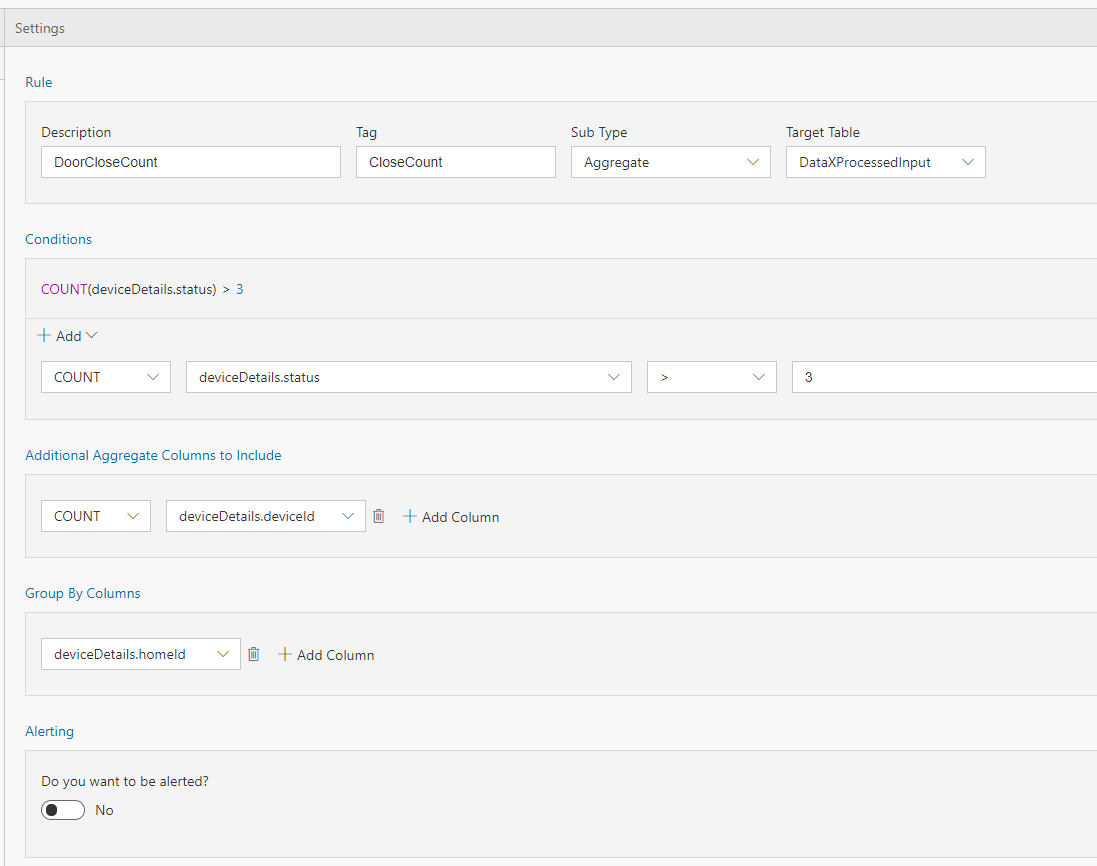Страница:
Local Tutorial Tag Aggregate to metrics
Страницы
Arm Parameters
Azure deployment
Cloud Deployment On Linux
Cloud Simulator
Cloud deployment
Configuring the Arm template
Create new metric
Creating your first pipeline in 5 minutes!
Data Accelerator with Databricks
Data Accelerator
Data Accumulator
Diagnose issues using Telemetry
FAQ
Find Applications For Your Environment
Home
Inviting others and RBAC
Live query
Local Cloud Debugging
Local Tutorial Add an Alert
Local Tutorial Adding SQL to your flow and outputs to Metrics dashboard
Local Tutorial Advanced Aggregate alerts
Local Tutorial Creating your first Flow in local mode
Local Tutorial Custom schema
Local Tutorial Debugging using Spark logs
Local Tutorial Extending with UDF UDAF custom code
Local Tutorial Outputs to disk
Local Tutorial Reference data
Local Tutorial Scaling the docker host
Local Tutorial Tag Aggregate to metrics
Local Tutorial Tag Rules output to local file
Local create metric
Local mode with Docker
Local running sample
Output data to Azure SQL Database
Run Data Accelerator Flows on Databricks
Scale
Schedule batch job
Set up aggregate alert
Set up new outputs
Set up simple alert
Spark logs
Tagged data flowing to CosmosDB
Tagging aggregate rules
Tagging simple rules
Tutorials
Upgrade Existing Data Accelerator Environment to v1.1
Upgrade Existing Data Accelerator Environment to v1.2
Use Input in different tenant
Windowing functions
functions
readme
reference data
sql query
5
Local Tutorial Tag Aggregate to metrics
Dinesh Chandnani редактировал(а) эту страницу 2019-04-15 17:28:29 -07:00
Содержание
In the previous tutorial we saw how to Tag streaming data when certain conditions are met. In this tutorial you will learn how you can set up rules to tag the data based on aggregate values without writing any code.
Steps to follow
- Open your flow
- Let's use a more rich event schema for this tutorial, the one used in HomeAutomationLocal, also shown below. Copy the schema to your flow, and delete any existing queries from the Query tab.
{
"type": "struct",
"fields": [
{
"name": "deviceDetails",
"type": {
"type": "struct",
"fields": [
{
"name": "deviceId",
"type": "long",
"nullable": false,
"metadata": {
"allowedValues": [
1,
2,
3,
4,
5,
6
]
}
},
{
"name": "deviceType",
"type": "string",
"nullable": false,
"metadata": {
"allowedValues": [
"DoorLock",
"WindowLock",
"Heating"
]
}
},
{
"name": "eventTime",
"type": "long",
"nullable": false,
"metadata": {
"useCurrentTimeMillis": true
}
},
{
"name": "homeId",
"type": "long",
"nullable": false,
"metadata": {
"allowedValues": [
32,
150,
25,
81
]
}
},
{
"name": "status",
"type": "long",
"nullable": false,
"metadata": {
"allowedValues": [
0,
1
]
}
}
]
},
"nullable": false,
"metadata": {}
}
]
}
- Switch to Rules tab and click on "+ Add | Tag Rule" button:
- With Sub type set to 'Aggregate' and Target table set to 'DataXProcessedInput' (which is the default input table), provide a description of the rule and add a Tag value. Any message/event satisfying the condition will be tagged with the value provided for Tag.
- Use the intuitive UI to set up the condition for tagging as shown above. For this example, the data ingested is home automation data. Anytime more than 3 devices are locked in a house, the data is tagged with "DoorLocked". A new column 'Tag' will be aded to the data with this information. Note, deviceDetails.status of 1 means locked, 0 means unlocked.
- In the Query tab, call ProcessAggregateRules() API and route the data to your desired output sink.
--DataXQuery--
T2 = ProcessAggregateRules(DataXProcessedInput);
OUTPUT T2 TO myOutput;
- Click Deploy
T2 will now contain the DataXProcessedInput data, along with tags from the rule set in this Flow.
- Click "Deploy" button. That's it! You have now created an aggregate rule for tagging that will be output to disk.
View the data
You can view the tagged data flowing in the location as defined in the previous tutorial.


